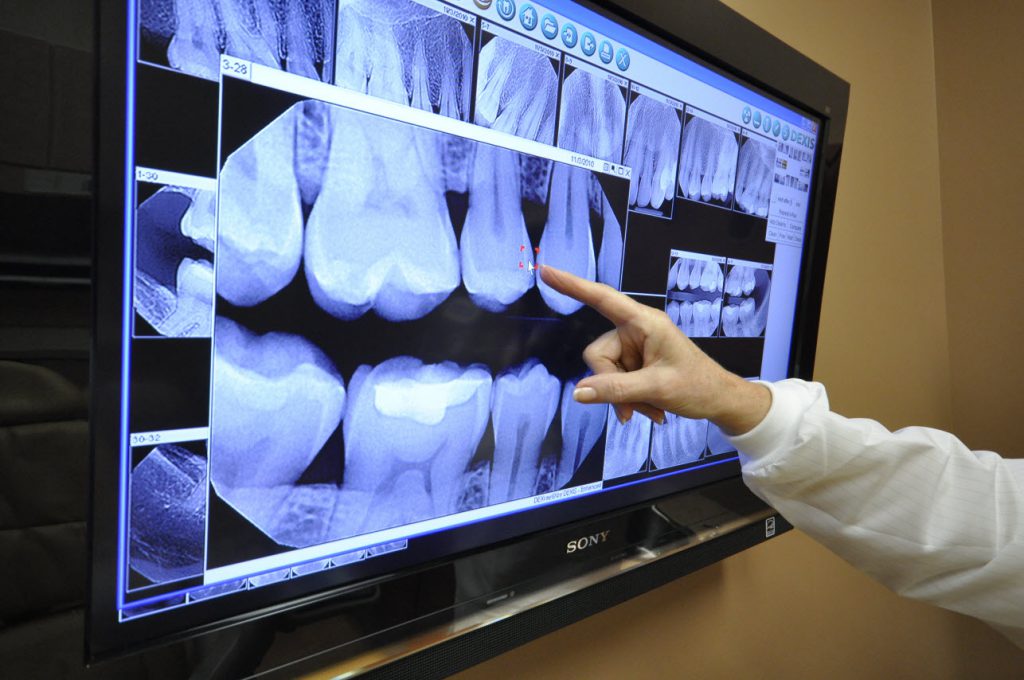What is Radiology?
Radiology in dentistry means radiography or X ray. Dentists mainly depend on radiographs to know the structures hidden like cavities, bone loss and masses which are malignant and benign. Both tooth decay and periodontal disease can be missed during a clinical examination, hence, radiographic evaluation of the dental and periodontal tissues is a crucial part of the comprehensive oral examination.

Types of Radiology
Digital radiography-The digital radiography is very similar to the traditional dental X-rays that use film. In digital radiography, dentist inserts a sensor into your mouth to capture images of the teeth. This is the only similarity between traditional and digital dental X-rays. Here a digital sensor is used to scan the teeth instead of the film. It is highly secure and quality scanning.
There are two types of Radiography
- Computed Radiography Digital
CR uses a photostimulable phosphor (PSP) plate to capture images. A laser scanner then scans the plate causing the stored energy (image) to release and subsequently captured to create the digital image.
DR uses a charge-coupled device (CCD) or a complementary metal oxide semiconductor (CMOS) sensor. Both these sensors are attached to a wire which is used to transfer the image from the sensor to a computer. The imaging of the CCD and CMOS sensors are almost similar.
Digital Radiography Dosage
Digital radiography requires less radiation than film radiography. The patient radiation dose for CR is in the range of 100 to 125 mrad per image and the dose for DR is in the range of 50 to 75 mrad per image. It is good to reduce the exposure time by at least one half when changing from D-speed film to CR. The exposure time must be less than 0.2 seconds (2/10 seconds; 200 milliseconds) for digital imaging. If the exposure time increases more than 0.2 seconds, it is considered as over dosage for diagnostic images.
Radiographic Views
There are two views
- Intraoral Radiographic view- Placing the radiographic film or sensor inside the mouth produces an intraoral radiographic view.
- Extraoral Radiographic view- Placing the photographic film or sensor outside the mouth, on the opposite side of the head from the X-ray source, produces an extra-oral radiographic view.
Advantages of Digital Dental Radiology
- The procedure do not require a film holder
- Comfortable for the patient
- Requires less time for the procedure
Disadvantages of digital Radiography
- Image distortion/ lower resolution
- May require retakes
- May result in superimposition of images
- Additional images require additional dose
- Exposure time variation can make images darker and lighter
- Digital images vary with viewing conditions
- Image noise can make fine variations in images
Authored By Dr Sanjay N - Orthodontics & Dentofacial Orthopaedics, Bangalore









